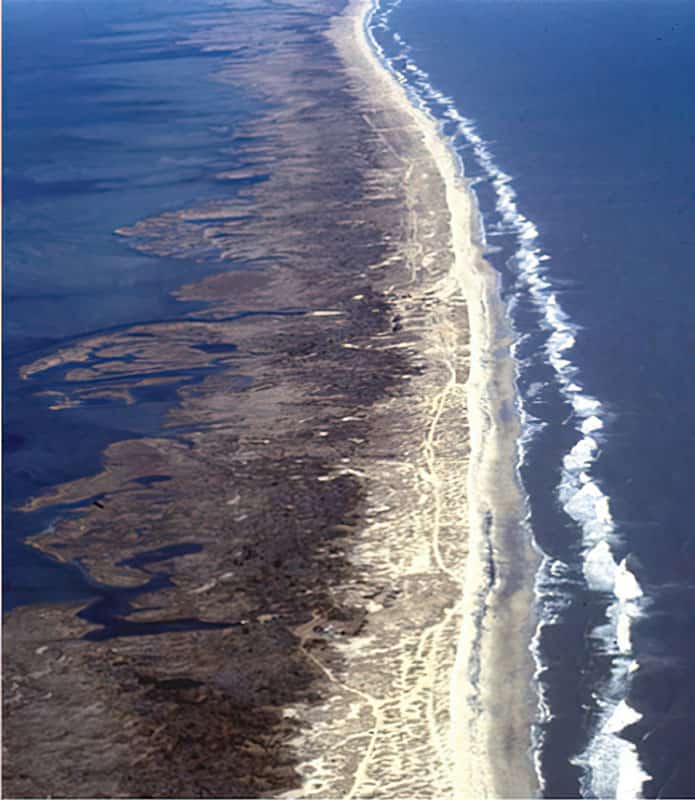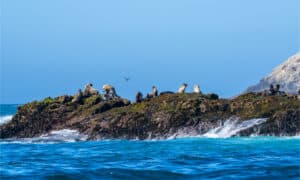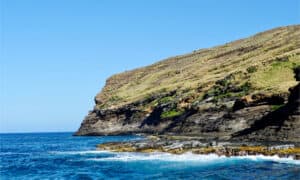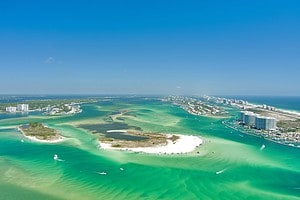For many people in the United States, a vacation down south to Florida or the Caribbean is one of the most relaxing trips a person can take. However, with countless islands and keys to explore, deciding which is the best spot for your next family trip can be challenging. In the following guide, we will look at the difference between a key and an island and some of the most popular locations to explore.
What Are the Main Differences Between a Key and an Island?
Many people assume that since a key is a type of island, the terms “key” and “island” can be used interchangeably. However, the two have some essential elements that make them significantly different. For example, unless the island is a coral island, the formation of a key differs completely from that of an island.
The creation of a key happens when a coral reef breaches the surface. Over time the coral is exposed to the elements, and organisms begin to flourish. As waves wash up particles such as sand and sediment, the key grows more extensive along with the ecosystem.
On the other hand, an island is simply a body of land surrounded by water. Unlike the key, an island isn’t created by exposed elements but is defined by the relationship between water and land.
Another factor that usually sets a key and island apart is the size of the landform. For instance, keys tend to be small and low-lying, while islands can be enormous — we’re looking at you, Australia.
What Is a Key?
Generally speaking, a key is a small, low-lying island formed on elements such as coral reefs and sandbars. For the most part, you will find keys in shallow waters where parts of the reef have breached the surface and started to form a landmass. It’s common to see these small islands along coastlines or next to other larger islands.

The Florida Keys are low-lying islands found in shallow waters.
©Bertl123/Shutterstock.com
Popular Keys Around the World
Since most keys occur in the world’s tropical regions, the most popular are those that tourists can visit. Below are a few of the most frequently visited keys in the world:
- The Florida Keys
- Dry Tortugas
- Los Roques
- The Exumas
- The Abacos
- The Berry Islands
- Key Largo
What Is an Island?
Unlike keys, an island is defined as a type of landmass surrounded entirely by water, meaning they can occur anywhere worldwide. Islands are everywhere, from oceans and seas to lakes and rivers. Islands also come in different shapes and forms, each with its defining characteristics.
Let’s look at what makes these islands different.

Islands, like the Norman Island, are completely surrounded by water.
©Andy Deitsch/Shutterstock.com
Coral Islands
Keys are included in coral islands as these landforms occur when exposed coral and organic material breach the water’s surface. These islands are generally located in tropical regions and feature crystal clear waters making them the perfect ecosystem for a wide variety of sea life.
Between the coral reefs below the islands and the wildlife on the landform, coral islands are a popular destination for travelers looking to snorkel or scuba dive.
Artificial Islands
Artificial islands differ from the other islands on the list as these landforms are manufactured and serve a specific purpose. An artificial island uses materials such as rock or sand to build a landmass from the bottom of a body of water to the surface.
While these islands often benefit the human population, they can harm the environment. Marine ecosystems are typically the most impacted by the habitat destruction caused by artificial islands.
Barrier Islands
Barrier islands are long, narrow islands that usually run parallel to another large landmass and provide protection from the open sea. In the United States, the east coast is home to a large number of barrier islands, including the Outer Banks, Absecon Island, and Fire Island.
While many of these islands serve multiple purposes, the biggest benefit of these landforms is the protection they provide to cities from storms and erosion. Often intense oceanic storms will lose power as it passes through barrier islands.

The east coast is home to a large number of barrier islands, including the Outer Banks.
©NOAA / public domain – License
Continental Islands
Continental islands are a unique group characterized by their relationship to the mainland. Generally, these islands form when various parts of the continental crust are exposed to geological processes such as tectonic plate activity or the flooding of low-lying areas along the continental shelf.
The ecosystems of continental islands are also vastly different from other islands. Since many of these islands share features similar to the mainland area, they can support a variety of ecosystems, from forests and deserts to grasslands and wetlands.
Tidal Islands
The distinctive feature that separates tidal islands from other islands is their connection to a landmass or larger island. These islands are often connected by a narrow piece of land that is only visible during low tide. During high tide points, the land strip or natural causeway disappears under the water, making it challenging to reach the island.
Most tidal islands occur in areas that experience strong tides with large tidal ranges. For instance, the United Kingdom is known for its tides and, as such, has several tidal islands, including St. Michael’s Mount.
Oceanic Islands
Unlike other islands, oceanic islands do not occur around a continent. Instead, volcanic activity helps form and shape these islands. Since oceanic islands are created from magma breaching the water’s surface and solidifying, many of these landforms are isolated and feature rough terrain.
With its isolated nature, an oceanic island is typically home to a unique ecosystem than other islands like barrier islands. For instance, the Galapagos Islands feature wondrous wildlife and fauna that draw visitors from around the globe.

Because of their isolated nnature, the Galapagos islands are home to a unique ecosystem.
©FOTOGRIN/Shutterstock.com
Popular Islands Around the World
With so many different types of islands worldwide, it can be challenging to narrow down which ones to visit. Travel & Leisure magazine identified the following 10 islands as the best globally.
- Ischia (Italy)
- Maldives
- Bali (Indonesia)
- Milos (Greece)
- Fiji Islands
- Galapagos Islands (Ecuador)
- Phuket (Thailand)
- Dominica
- Boracay (Philippines)
- Cape Breton Island (Nova Scotia)

Aerial view of a heart shaped island in the Maldives.
©Romolo Tavani/Shutterstock.com
The photo featured at the top of this post is © iStock.com/Travel Wild
Thank you for reading! Have some feedback for us? Contact the AZ Animals editorial team.






